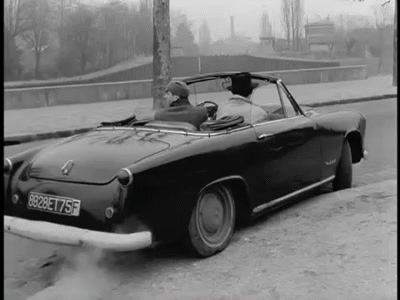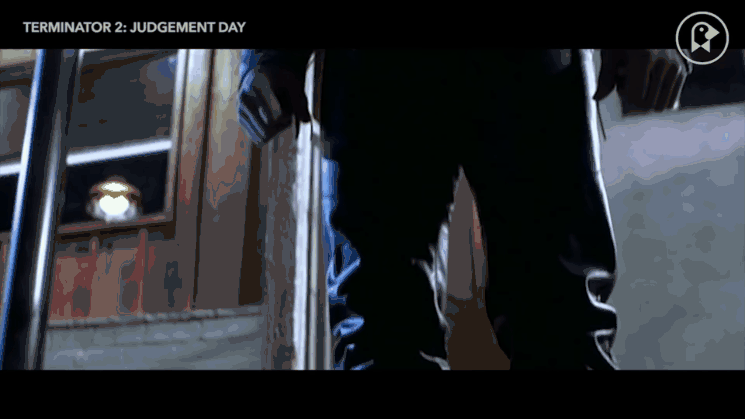Camera Angles
High Angle: camera looks down on subject from High angle which can make the subject seem vulnerable and powerless.
Reverse Angle: shot taken from 180 degree opposite from previous one, used for dialogue.

Eye Level Angle: level of camera is placed at same height as subject's eyes.

Low Angle: shot from low angle looking up to make the subject look strong and powerful.

Canted/Dutch Angle: camera angle is slanted to one side to portray uneasiness.
Camera Movements

Pan: move camera horizontally while base is fixated on certain point.

Tilt: camera stays in fixed position but rotates up/down in vertical plane.

Dolly: camera smoothly moves forward/backwards, parallel to object while in motion.

Track: camera moves from side to side but still looks forward.
Hand Held: camera is held by operator's hands which results in a
shaky image.
:max_bytes(150000):strip_icc()/animate-cc-zoom-5c5debde46e0fb0001849d52.gif)
Zoom: camera stays still but lens moves closer/further away from subject.

Reverse Zoom: camera moves toward background while zooming out.

Steadicam: camera will move around in a smooth, steady and stable way.

Pedestal: camera moves vertically up/down while fixed in one location.

Crane: camera is fixed to a crane and moves around in the air, follows subject.
Confusions/Successes
Some confusions i've had so far are not being able to differentiate pedestal and tilt and not knowing how to identify a specific steadicam shot.
Some Successes i've had are being able to display these angles and movements within my own short film and knowing how to identify most of them in short clips or pictures
Applying this to my film
When I begin to shoot my possibly horror film, I would be able to apply these skills by using the different angles and movements to bring out the depth and the great emotions my characters feel throughout the film. For example, I could use the canted/dutch angle to represent a scary and uneasy scene to create the same feeling for my audience.

https://gfycat.com/bigheartedgrandiosedunlin
https://tvtropes.org/pmwiki/pmwiki.php/Main/ShotReverseShot
https://forum44.djicdn.com/data/attachment/forum/201703/09/184218mbjchaauhjjzujjd.gif
https://blogger.googleusercontent.com/img/b/R29vZ2xl/AVvXsEi9hbFchDy6PytXU2OdyZ7PD-AuWCQBPy5pq2vNE7hXWVsMPIq88jVCNohK65yt-A5mwhITIL-Ji-VbW-cLPkMDBaE0pQDM1my9a6PQqro42vhlzgZZ-EyisEzvIX6F0SqPBHfyDsnuq1x4/s1600/steadicam+1.gif







 Over the Shoulder Shot:
Over the Shoulder Shot: Two Shot:
Two Shot:  Long (Full/Wide) Shot:
Long (Full/Wide) Shot:
 Bird's Eye View Shot: taken above the scene, establishes relationship between characters and setting.
Bird's Eye View Shot: taken above the scene, establishes relationship between characters and setting.





